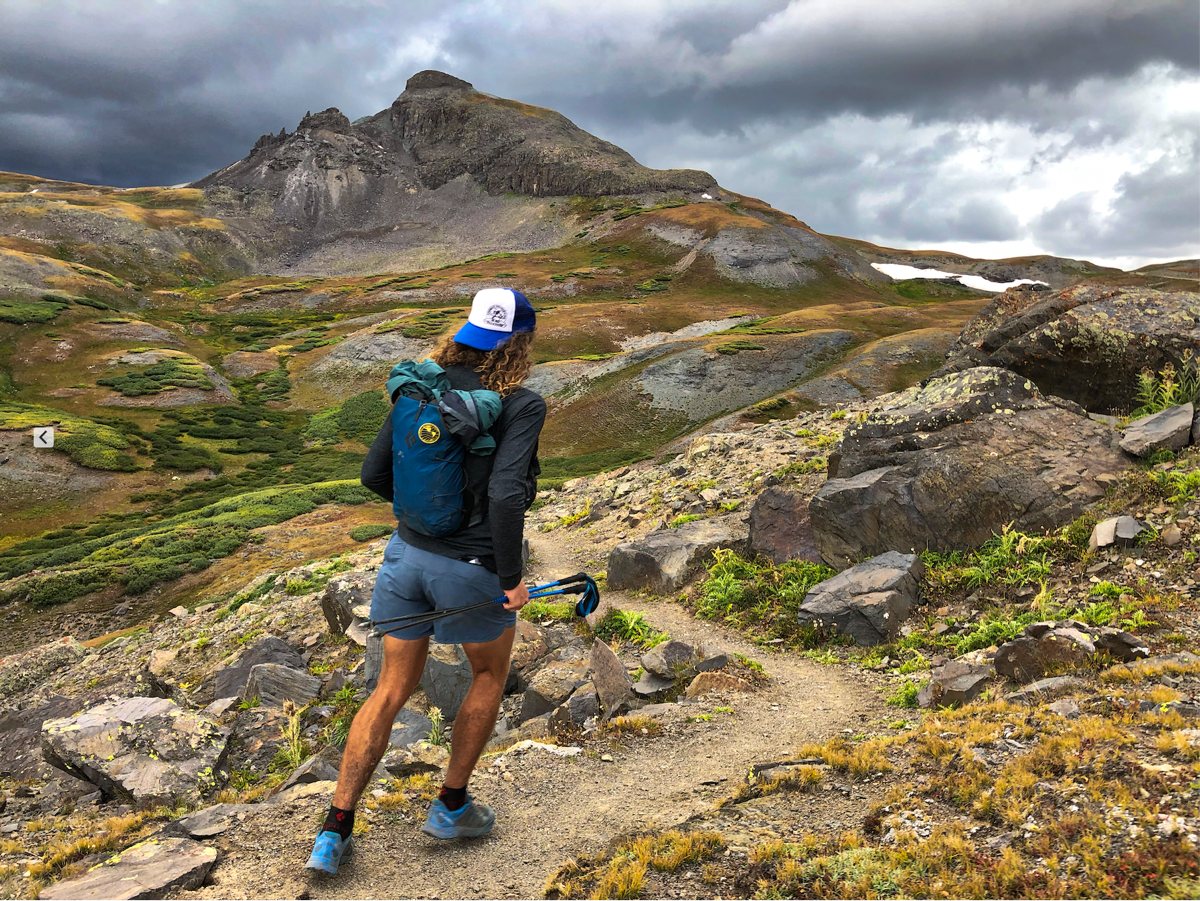
Like this article? Get your copy of the book “Where the Road Ends!”
Welcome to this month’s edition of “Where the Road Ends: A Guide to Trail Running,” where we discuss how to run safely in very cold weather.
“Where the Road Ends” is the name of both this column and the book Meghan Hicks and Bryon Powell of iRunFar published in 2016. The book Where the Road Ends: A Guide to Trail Running is a how-to guide for trail running. We worked with publisher Human Kinetics to develop a book offering the information anyone needs to get started, stay safe, and feel inspired with their trail running. The book Where the Road Ends teaches you how to negotiate technical trails, read a map, build your own training plan, understand the basics of what to drink and eat when you run, and so much more.
This column aims to do the same by publishing sections from the book as well as encouraging conversation in the comments section of each article. We want you to feel inspired and confident as you start trail running as well as connected to iRunFar’s community of off-road runners!
In this article, we excerpt from Chapter 7 to talk about the basics of staying healthy when running in the cold.
Dealing with the Extreme Cold
To some degree, dealing with extreme cold is simpler than dealing with extreme heat. Although you can take off only so many clothes in the heat, you can keep putting them on when it gets colder. Just as in cool and moderately cold conditions, layering is the key. You’ll want to be able to add layers quickly should your progress slow or conditions worsen. Just as important, you’ll want to be able to shed layers as temperatures warm or as you increase your aerobic output. Zippered apparel and tops with sleeves you can push up add the option for fine-tuning along the way. Basic options for cold-weather apparel are discussed in this article. Also, don’t forget your hat and gloves.
Keeping Your Feet Warm in the Cold
Keeping your feet warm can be a bit trickier. Geoff Roes, an Alaska resident and the 2010 Western States 100 champion notes, “The number one thing to be aware of in regard to keeping feet warm is circulation. It’s not primarily the amount of insulation that you wrap around your feet that will keep them warm, but rather your circulation in conjunction with this insulation. In most cases, increased insulation leads to decreased circulation, and this will always cause your feet to be colder rather than warmer. In this sense, anytime you start to add insulation, it’s important to take measures to avoid decreased circulation.”
Roes wears “a medium-weight, over-calf-length running sock (keeping the lower legs warm will help keep the feet warm) with a pair of shoes that are at least a half-size larger than normal sizing.” If it’s also windy, Roes suggests “a water- or wind-resistant shoe.”
Cold-Related Health Issues
Although the basic method for dealing with extreme cold may be simple, cold can quickly lead to injury, loss of an appendage, and even death. In some cases, we’re talking minutes rather than hours for frostnip or frostbite to occur when temperatures fall well below freezing, especially if it’s windy. Generally, hypothermia settles in over longer periods as your core temperature slowly falls. It can happen quite quickly if you become wet, particularly if you’re immersed in water. Hypothermia can occur even if you’re moving.
Frostbite is the freezing of skin. It’s characterized by skin that first turns very cold and red before becoming numb, hard, and pale. Frostbite is most common on the fingers, toes, nose, ears, and other exposed facial skin. Minor frostbite, such as its first stage—frostnip—can be self-treated with gentle rewarming of the skin. Seek emergency medical attention for significant frostbite, indicated by skin that is pale or white, skin that remains numb, or skin that blisters within a day or two of rewarming.
Hypothermia is the dangerous lowering of the body temperature below 95 degrees Fahrenheit (35 degrees Celsius). Mild hypothermia includes symptoms such as shivering, dizziness, hunger, nausea, rapid breathing or rapid heart rate, trouble speaking, or slight confusion. As hypothermia progresses to its moderate or severe stages, symptoms include increased shivering or inappropriate cessation of shivering, lack of coordination, slurred speech, confusion or poor decision making, drowsiness, decreased consciousness, weak pulse, or slow, shallow breathing. Seek immediate medical treatment for anyone who exhibits symptoms of hypothermia.
Avoid the Cold
Just as you do on hot days, you can adjust when and where you run in cold weather for a more comfortable experience. Running in mid- to late afternoon usually means maximizing the day’s warmth, whereas an early morning run will assure that you’re running in the deep freeze. Choosing a time and route that keeps you in the sun will also keep you warmer. On the other hand, you’ll want to stay out of any strong, sustained winds. On a windy day, a leafless deciduous forest can be a good wintertime solution for running in the sun with reduced wind.
Dry Body, Warm Clothes
The quickest way to fall victim to hypothermia is to get wet. This can happen by being rained on, sweating heavily, or being immersed in water, partially or fully. As such, you should take great care to stay dry in cold conditions. You need to be even more cautious than normal around bodies of water and to take greater care to stay dry when it’s cool and raining. More on that soon.
In terms of mere comfort, Roes notes, “Warming up your head is one of the easiest ways to warm up your entire body, so often times it’s worth adding an extra layer on your head, even if that’s not where you are feeling cold. I have had dozens of times in which I’ve had a chilled-to-the-bone feeling when running in the cold and had it disappear within minutes of adding an extra layer to my head.”
Carrying spare clothes is good insurance if you underestimated the cold or some of your apparel becomes wet. Gloves and mittens have a tendency to get wet, so carrying an extra pair can be well worth the marginal weight. Make sure you have a way of keeping the apparel you carry dry from sweat, precipitation, and possible submersion.
Two additional items you might want on your coldest trail runs are something to keep your face warm—be it a mask, balaclava, or Buff—and chemical hand warmers, which can be used to keep just about any body part warm.
Excerpted from Where the Road Ends: A Guide to Trail Running, by Meghan Hicks and Bryon Powell. Human Kinetics © 2016.
To learn more, here are our in-depth articles about running in the cold:
- The science of cold adaptation
- Managing Raynaud’s phenomenon and cold extremities while running
- Trail running and hypothermia
- Trail running and frostbite
Call for Comments
- What basic tips do you have for managing the cold while running?
- Do you have stories from when you accidentally got too cold while running?

